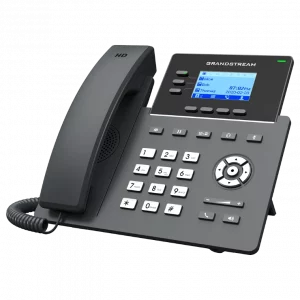
How Having a Good VoIP and SIP Gateway Provider Facilitates Smoother Communication
Your business won’t accomplish much if your stakeholders can’t communicate. No matter what field you specialize in, it’s vital that your leaders and workers can disseminate project data, share performance feedback, and plan as a cohesive team. Finding the right VoIP and SIP gateway provider might prove critical to your ability to keep the conversation flowing, particularly if your staff thrives on high-quality audio, video, conferencing, and desktop-sharing capabilities.
Voice over Internet Protocol, or VoIP, and Session Initiation Protocol, or SIP, technologies are even more relevant in a post-COVID workplace. Gallup reported that as of September 2021, 45 percent of full-time employees in the U.S. worked from home. The same study found that the remote work trend was likely to continue.
In other words, data-ready technologies that facilitate seamless information sharing aren’t just nice to have: They could improve your ability to maintain a modern workplace that attracts top talent.
Here’s what you ought to know about how today’s leading VoIP and SIP technologies work and what a good provider can do for your business.
Why Do You Need a VoIP and SIP Gateway Provider?
Before we get any further, let’s quickly define the technologies behind a VoIP and SIP gateway provider.
Voice over Internet Protocol is a catch-all term for various technologies that enable users to transmit voice data across public or internal networks. For instance, you may have heard of VoIP phones that plug into the same Ethernet jacks your office or worksite computers use to connect to the web.
Because VoIP is a protocol instead of a specific piece of physical technology, you can pick hardware and software to suit your needs. As long as your phones, adapters, digital gateways, firewalls, and chosen communication software adhere to the VoIP standards, you can use them to talk – without relying on your old analog phone lines.
The Session Initiation Protocol is a similar scheme – It governs the way real-time sessions that include communication media are provisioned, initiated, kept running, and dropped. For instance, SIP tools can strike up a conversation between two people just as easily as they initiate group video conference calls.
Related: VoIP Video Conferencing for a Hybrid Workforce
A VoIP and SIP gateway provider helps you connect legacy phone systems, like PBXs, with more modern VoIP and SIP resources – or the other way around.
How Do VoIP and SIP Interact?
The easiest way to keep things straight is to consider VoIP as the more general category. You can implement a VoIP setup powered by SIP or choose one of several other protocols.
Why Use SIP Instead of Other VoIP-enabling Protocols?
If you’re like most companies, you’ll be drawn to the performance advantages: SIP is battle-hardened, reliable, and cost-effective.
SIP has been around since the 1990s and has undergone continual improvements in the interim. When creating a new setup, your VoIP and SIP gateway provider can use industry-standardized tests to ensure that the network will respond smoothly to high call volumes or usage spikes.
Although some SIP connections use private branch exchanges, which are like internal switchboards, they can often be implemented with less startup overhead. Their ability to self-monitor while running makes it easy to sustain high service quality with minimal maintenance and troubleshoot issues as they occur.
With so many technologies to choose from, there are plenty of ways to implement a successful SIP network, so you retain maximum flexibility. One popular methodology, SIP trunking, involves the use of shared network hardware for everything from voice and video calls to your regular digital traffic.
As long as the service is provisioned and maintained correctly, you don’t even need to worry about interference between the data streams: The gateway, such as a router or switch, sorts the packets in real-time.
SIP trunking grants you the benefit of using a unified system for everything instead of having to deal with a hard-to-maintain, expensive mishmash of hardware and software. At the same time, the protocol maintains clear boundaries between public and private network resources keeping your data secure.
Related: What to Look for in Top SIP Trunking Providers
There are other advantages too. For instance, one 2019 study explored the use of SIP to enable VoIP communications in Internet of Things, or IoT, devices. Although the IoT is known for its traditional susceptibility to security threats, researchers were able to leverage the advantages of SIP’s support for encryption to implement a secure, cost-effective network complete with biometric authentication. Even if your industry isn’t fully on board with the IoT trend yet, the lesson applies to most modern workplaces: Employees commonly use their own devices at work, and the number of connected business tools is growing by the minute.
Putting It All Together
How can you build a secure communication-enabled network that supports the way you get work done? The answer lies in picking the right partner.
VoIP and SIP providers furnish the critical infrastructural elements you’ll need to set up a compliant network – such as the gateway hardware and other tools that keep the data moving. They can even help you build an implementation around existing frameworks or start from scratch.
How Will Your VoIP and SIP Gateway Provider Accelerate Your Business?
Whether you depend on Slack, Skype, Zoom, or some other tool, modernizing your communication practices is the only way to support your increasingly diverse workforce. This isn’t something you can achieve with suboptimal networking, however. VoIP and SIP implementations demand high-bandwidth, high-quality connections, particularly if you want them to grow with your enterprise.
SIP.US empowers your networks with the augmentations that facilitate seamless, resilient interaction. With immediate provisioning that lets you start calling right away and easy-to-use, fully-automated software tools, it’s never been simpler to take control of how you share vital information.
Ready to build a communication system that keeps up no matter how much you need to conference, chat, and talk? Get started today to forge more meaningful connections with the colleagues who power your success.


